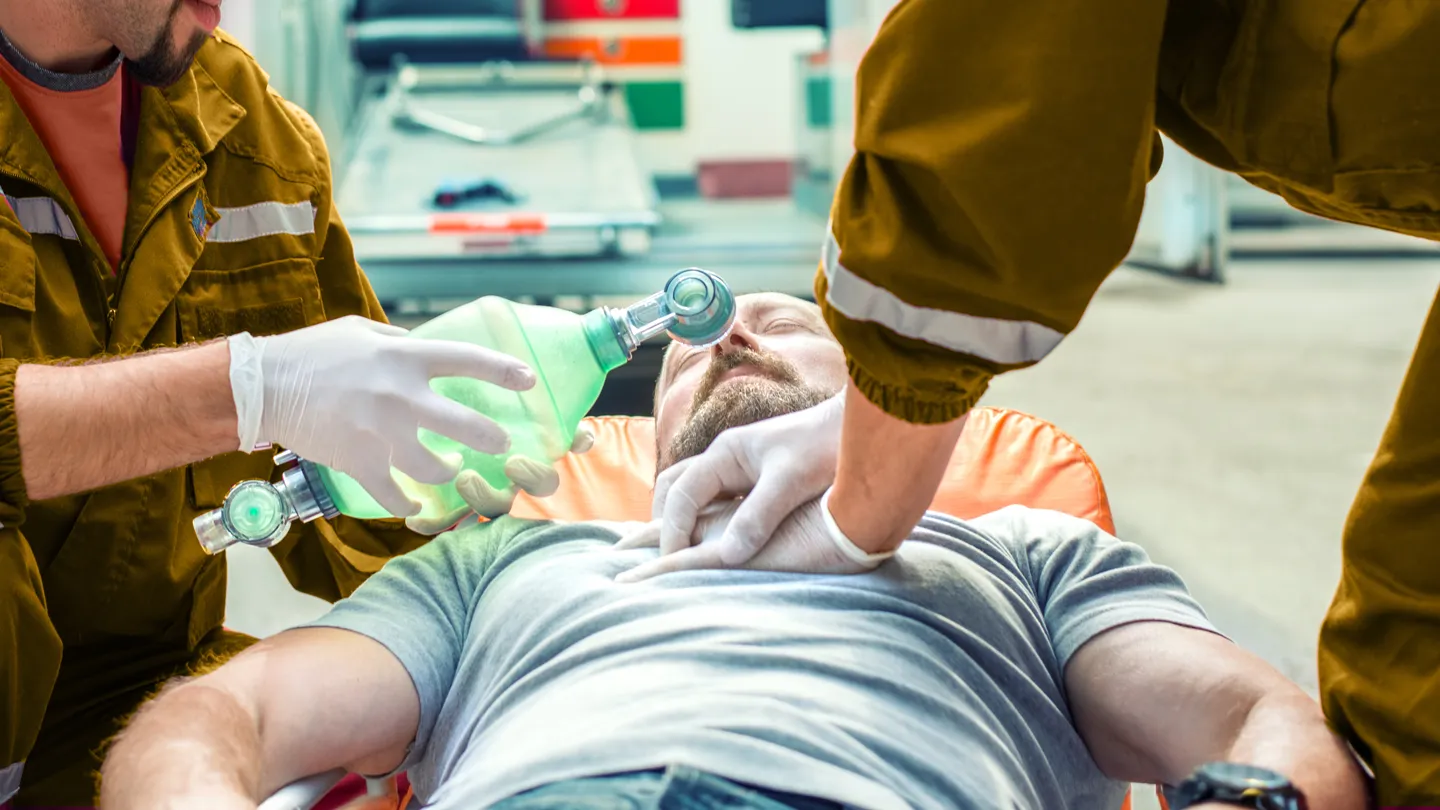The subject of death is one that a lot of people are reluctant to talk about, but it’s part of the human condition that we all have to confront. In some cases, the more you know about a topic, the less scary it is. Below are 10 points you might not be aware of about dying.
Table of Contents
1. Death Is Frequently a Procedure
There are a variety of causes for death and a lot of them happen instantly. For those who suspect the time is nearing — be it from illness or old age there are certain indicators. These include slow breathing and a decrease or a weakening of heart rate, dropping the blood pressure (BP) and changes in the color of the skin according to Zachary Palace, MD, medical director of the Hebrew Home at Riverdale, part of RiverSpring Living in Riverdale, New York. The process, as well as the order in which symptoms manifest, could vary for every person.
“In general, in the time leading up to death, usually the person will become pale because of a drop in blood pressure,” the doctor says. “The fingers could become cold or appear blue. If you feel a pulse, it’s weak and then they begin to exhibit an irregular pattern of breathing. That’s an indication that something is quite ominous.”
2. Death Is Most Likely Near When Breathing Slows
Doctor. Palace explains that there can be breath gaps that make it appear that the patient is not breathing for 15 to 20 minutes. Families often feel worried about this however he reassures them that it’s part of dying.
3. Death Happens in Two Stages
The initial stage, referred to as clinical demise, happens when the heart of a person ceases to beat. Within 4 to 6 minutes later brain cells begin dying due to the lack of oxygen and a the process of death is biological as per the American AED CPR Association, that certifies individuals in first aid as well as cardiopulmonary Resuscitation (CPR) and an automated external defibrillator (AED) use and many more.
Although it is sometimes possible to revive patients during the process of dying, it’s impossible during the process of biological death.
4. CPR Doesn’t Always Work as Well as It Seems on TV
Television shows such as ER or Grey’s Anatomy have influenced many into believing that cardiopulmonary Resuscitation (CPR) can save a lot of people’s lives. According to a study published that appeared in Emergency Medicine Journal, 95 percent of emergency department patients were able to get the majority of their knowledge on CPR from television shows over half believed that the CPR’s success rate to be 75 percent. CPR to be around 75 percent.
However, the reality is quite different but it is particularly so for those suffering from chronic illness. According to research conducted in the past that shows overall survival rates following CPR are around 12 percent for out of-hospital cardiac events, and up to 40 percent for hospitalized arrests. While CPR can save lives, it may also have negative effects on health and the quality of their life. The authors of the study stressed that it is important to discuss the potential risks and advantages of resuscitation with your healthcare caregiver and family members particularly in regards to dying care.
5. The Last Sense to Go Could Be Hearing
It is generally believed that hearing is one of the senses that are lost prior to dying. A study published in Scientific Reports found that the auditory systems of those suffering from hospice were similar to that of healthy controls who were young and healthy only hours prior to the time of death. “[Hearing] is the most passive sense,” Palace says.
Palace in noting that in times when death appears approaching, “We encourage families to talk and share their last thoughts, love, and support with their loved ones, because even though the blood pressure is dropping and they’re fading out, they can hear what we’re saying.”
6. You are able to defecate and urinate
While we’re alive our brains are constantly transmitting signals to inform various parts in our body how to move. In the end it stops sending these signals and the muscles relax.
“The neck of the bladder and the sphincter are in a constant state of contraction, so when there’s no more neural signals to the bladder or bowels, then they relax,” Palace states. “So it’s not uncommon just after death for urine to come pouring out or for someone to defecate.”
7. The Only Use of Morphine Is to Reduce the Pain of Dying
Palace states that the most common misconception the public hears about is that morphine is administered to patients in order to cause death. Palace believes this could not be any further than the reality. “Obviously, physician-assisted suicide is not legal in most states, so morphine is not given to help hasten the end,” He says.
When someone is suffering from a death, Palace explains, blood pressure decreases and less oxygen is able to reach the organs. The body responds by gulping for air in an unsuccessful attempt to boost the rate at which it breathes. Doctors call this air-hunger.
“That gasping is very difficult for families to see, as it obviously looks painful, and that’s where the role of morphine comes in,” Palace states. “The proper dose of morphine relieves the sense of air hunger, so they’re breathing more calmly and more comfortably.”
8. Although the entire body may be dead, certain of its components are still alive.
It is also the very first organ to begin breaking down, and the other organs follow. The living bacteria that live in our bodies especially in the bowels play a important role in the decomposition process, which is also known as putrefaction. The process produces a powerful odor, referred to as the odor of death. “Even within a half hour, you can smell death in the room,” Palace declares. “It has a very distinct smell.”
9. The idea of your life flashing before your eyes could have a scientific explanation.
If someone dies in a film or TV show, it’s common custom to see their memories from different times in their lives flashing before their eyes. There may be some truth in this phenomenon. In a research study published in 2022 by researchers, they described an incident report about an elderly man who seemed to have a sudden flash of memory just a few seconds after his heart had stopped.
Doctors were conducting brain scans of the 87 year old patient who was admitted into the hospital after falling resulted in blood loss to his brain. He passed away from cardiac arrest. The scans continued running even until his heart stopped. They identified a sudden burst of brainwave activity that is associated with dreams and memory lasting for about 30 seconds. The researchers speculated that the moment of intense activity may represent memories that replay from his life. An earlier study of rodents showed similar high levels of brain activity shortly after the rodents’ hearts stopped beating.
10. After Death, Consciousness May Persist
Researchers have been trying for a long time to figure out exactly what takes place to our minds following the death of a person. A study of patients suffering from cardiac arrest that was published on September 20, 2023 by the journal Resuscitation could provide some clues. The study included more than 500 people of U.S. and British hospitals who received CPR following the stoppage of their heart beating. Less than 10% of those who were studied survived, however of the patients, 4 of 10 reported some level of consciousness after CPR.
Certain participants reported experiencing lucid dreams such as the feeling of being separated from their bodies, watching things without pain, and an accurate assessment of their actions and relationships. Researchers also spotted brain patterns in scans that were linked to memory and thought for up to an hour after CPR. “This is the first large study to show that these recollections and brain wave changes may be signs of universal, shared elements of so called near-death experiences,” stated the study’s senior lead author Sam Parnia, MD PhD, a research assistant professor at the medical department of NYU Langone Health, in an announcement.
The Takeaway
While we all need to confront death, it’s still something that many aren’t keen to discuss. However, knowing the facts about something can decrease the fear associated with it. Certain facts about death that your physician might not be able to tell you are that death is an ongoing process. Certain causes of death happen instantly and others are not. However, when someone dies because of health or disease, symptoms appear with time, including changes in the color of the skin and a decrease in heart rate. If breathing becomes slow the likelihood of death is near.
There are two types in death. There is clinical that occurs when the heart stops and then biological death which can occur between 4 and 6 minutes later, as brain cells begin to cease to function. The less well-known facts about death are that CPR isn’t as effective as it appears on television, and hearing could become the final sense you lose and you could have to vomit or urinate shortly after passing away. In addition, there could be research-based evidence to support the concept of the flashing of life before your eyes, and the consciousness remaining after the death.


